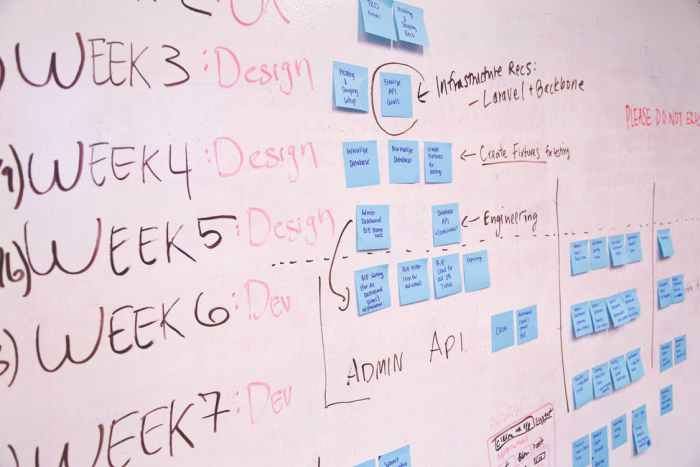Planning. As Project Managers it’s something that we tend to excel at and need to do on a daily basis but how can you ensure that you’re making a realistic planning that will fit with the different priorities and working schedule? What are the best ways that you can make a workable plan that will stick?
One of the common complaints that I hear is regarding setting realistic expectations and deadlines. They tend to notice that Project Managers set deadlines that are completely unrealistic or unattainable just to make senior Stakeholders happy. The result is often that deadlines then lose their function as everyone realises that they’re useless and instead of motivating people for the last sprint, they often give up and have the mentality: “we’ll never make it so why bother running at all?”.
If you’re working in an environment where your team has to work on multiple projects then it’s important then get consensus amongst your group of Project Managers for priority. Normally this is done in collaboration with your Project Management Office (PMO) and working alongside your Portfolio Managers to align priorities with your organisation. This is a major requirement and one that you need to make sure happens and is adhered to by all Project Managers. Without this alignment and agreement, your teams will be working on conflicting priorities and for different projects. This can also cause a lot of delays because they may be forced to switch several times a day to different projects and tasks which slows them down.

It sometimes feels like you’re herding cats whilst you’re trying to align priorities and get an understanding of what will be done, and when. I’ve come up with a handy set of hints that could help you if you’re struggling with your planning and priorities.
- Make sure that you have a good understanding of the work that actually needs to be done. Is it scoped out enough? Is it in enough detail? If it’s not, then I’d work on this as a first priority before handing out planning to the wider team. If you don’t know what’s really required, how do you know how long it’ll really take?
- Understand the priorities within your team and organisation. Is your project #1? Or is there something else that has a higher priority? This could help you plan buffer accordingly as if you’re not the highest priority there may be a delay in when your resources can become available.
- How big is your team? Have you got all of the necessary skills? If not, look at making sure that you’ve got the necessary resources available in the timeframe that you need them. In the organisations that I’ve worked in this has been done through employing contractors that had specific skills that we needed (e.g. PeopleSoft, Specific Development code etc).
- Does your planning make sense? I always like to discuss my planning and steps with a colleague to make sure that I’ve included everything that I need and more importantly, that I’m being realistic with my time frame. As you become more Senior, your colleagues could be asking this of you. Each organisation and project is slightly different and the timescales that are available may also be different but there could be some standards that are useful to know (e.g. User Acceptance Testing (UAT) will always take 4 weeks).
- Does everyone understand the organisation’s priorities? If this isn’t the case, I’d talk to your Program Manager and PMO to make sure that this is established and communicated throughout the wider teams. It can be a simple miscommunication or misunderstanding which causes a lot of conflict regarding timeframes and resources.
- Are your resources all trained to do the job that they need to be? At the start of every yearly cycle, I work with the Development Manager or Line Manager of the resources to understand the development of each of the resources that I work with and where this may impact their availability for my project. I do this for purely selfish reasons! If I know when that team member is trained on that specific area, I can then utilise them rather than pay for an external which would cost the project more money. It’s also important to understand if they’re being trained on company time or if it’s over a weekend
- Do you have sufficient resources to complete the work? During certain periods of the year (e.g. summer, Christmas, national holidays) there will be a reduced number of hours available for work. Are you looking at the availability before finalising your planning? Have you taken this holiday planning into account?
- Are you updating the planning throughout the project to make sure that it’s up to date and taking completion targets into account? Is everything running to plan? or are there delays? Having up to date planning will confirm if you’re really on track or if there are problems lying ahead.
Planning is a critical task as a Project Manager and it’s something that you need to make sure is accurate before talking to your Stakeholders and team. I’ve done a webinar for Projectmanagement.com on “The questions that you should be asking your team” and it can help you work on the questions that you’re asking your team and how to improve them.

Have you got any planning tips? Let me know what you think!
Share this:




